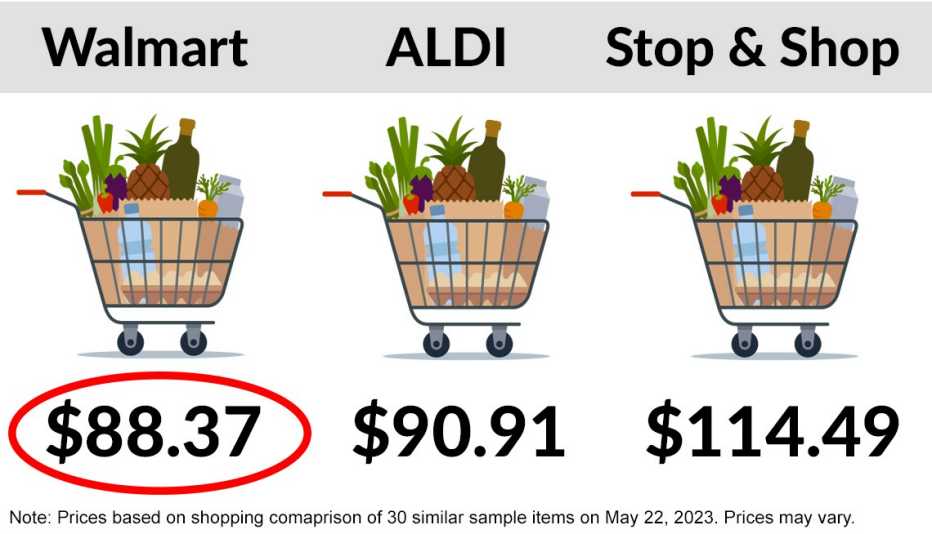AARP Hearing Center


Consumers tend to be loyal to their supermarkets, but that could be costly because prices from one retailer to the next can vary by a lot. With grocery bills up nearly 6.7 percent year over year, according to the most recent U.S. Bureau of Labor Statistics consumer price index, any savings can help, even if it means going somewhere new.
“Prices are a function of a lot of factors,” says Ravi Anupindi, a professor of operations, research and management at the University of Michigan’s Ross School of Business. “Walmart is a big retailer and thus can exercise its market power to extract better prices from suppliers and pass them onto customers. Smaller retailers do not have that much market power.”
The variety on store shelves, the quality of the food, handling and labor costs, competition and the demographic of the shopper all play into the prices a particular retailer charges. Stores that cater to lower-income shoppers tend to keep prices lower, while supermarkets that have a lot of variety may have higher prices as a result.
Either way, consumers have a lot of options when filling their shopping carts with groceries. There are discount stores where you can get big bargains on select items, traditional grocery stores that amp up the savings by offering generics and loyalty programs, and one-stop shops where you can get everything from bread to batteries in one place. Proximity to the store and the type of food you purchase will play a role in how much you save. But all things being equal, in some categories, location is everything when it comes to getting a deal. To illustrate how much, we went shopping. Armed with a list of 30 grocery items, we visited Aldi, Walmart and Stop & Shop locations around Long Island, New York, to see where you can save the most on everyday purchases. The totals are based on non-sale prices and do not include coupons, loyalty discounts or taxes. Here are our results.


The Winner: Walmart
Walmart has been a part of American culture since 1962, when the first store opened in Rogers, Arkansas. Today there are 4,684 stores across the U.S., including 3,572 Walmart Supercenters that sell everything from bedding to bread. Walmart is known for its low prices, and that is true of its groceries. Across most categories, Walmart came in first or second when it comes to price.
“Walmart is generally in a position to take a lower markup on groceries because they’re trying to get you in so you buy higher-markup items in the rest of the store,” says Clark Howard, a consumer shopping expert and host of The Clark Howard Podcast. “Walmart can afford to do something a traditional grocer can’t do, which is take a lower markup on groceries — because they just want you in the building.”


The ability to buy everything under one roof on the cheap appeals to many consumers, including Robert and Sherri Evans. The 74- and 68-year-old retirees say they shop at Walmart for the convenience and to save. “It’s one-stop shopping,” Robert says. “There is a lot of variety here that you don’t find at regular supermarkets, and it’s absolutely cheaper.”





































































More From AARP
Take 5 Expenses Off the Chopping Block
Don’t stop making these good money moves
Staples You Should Always Buy On Sale
If they store well or freeze well, jump at the chance to buy on sale